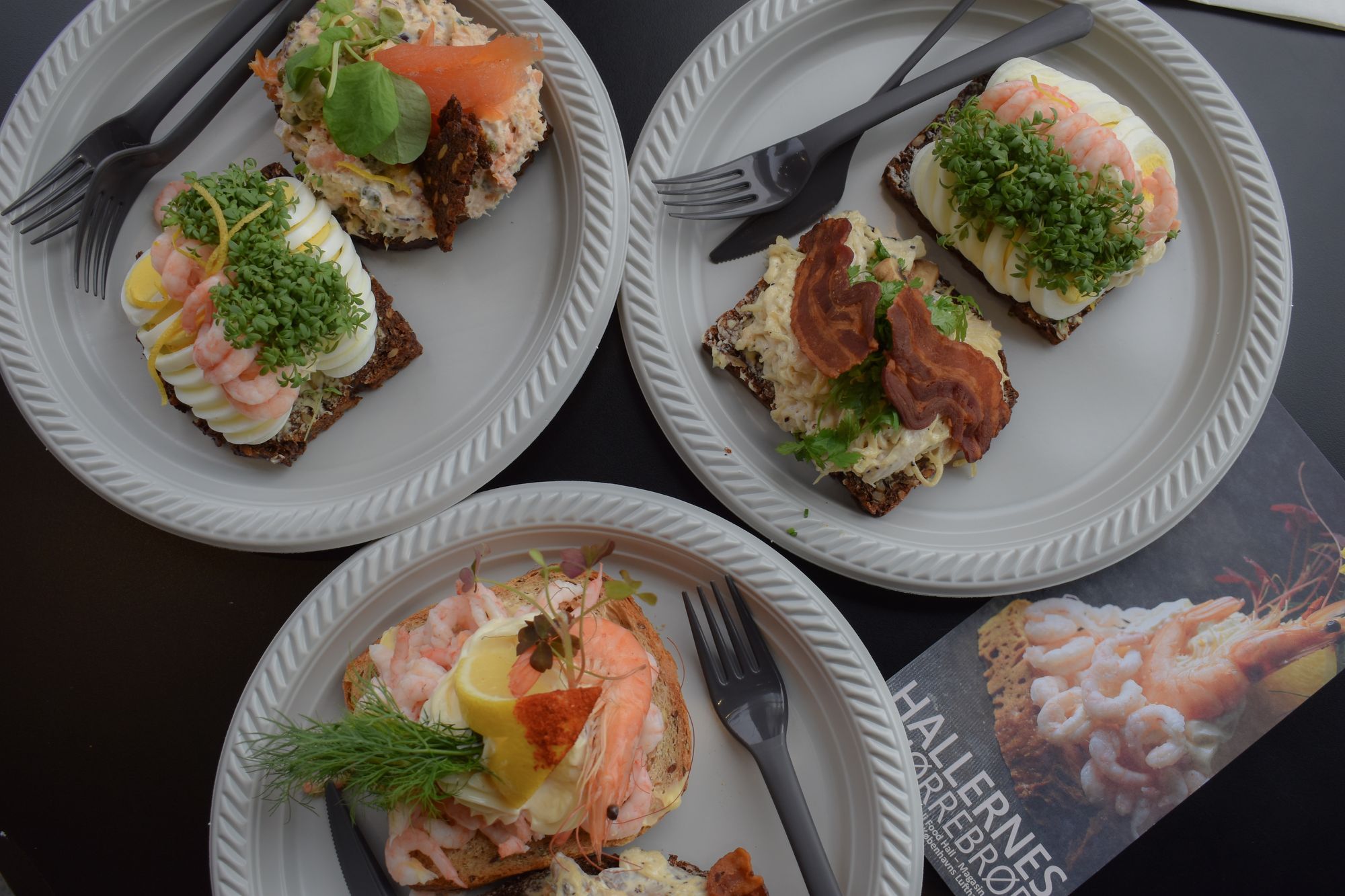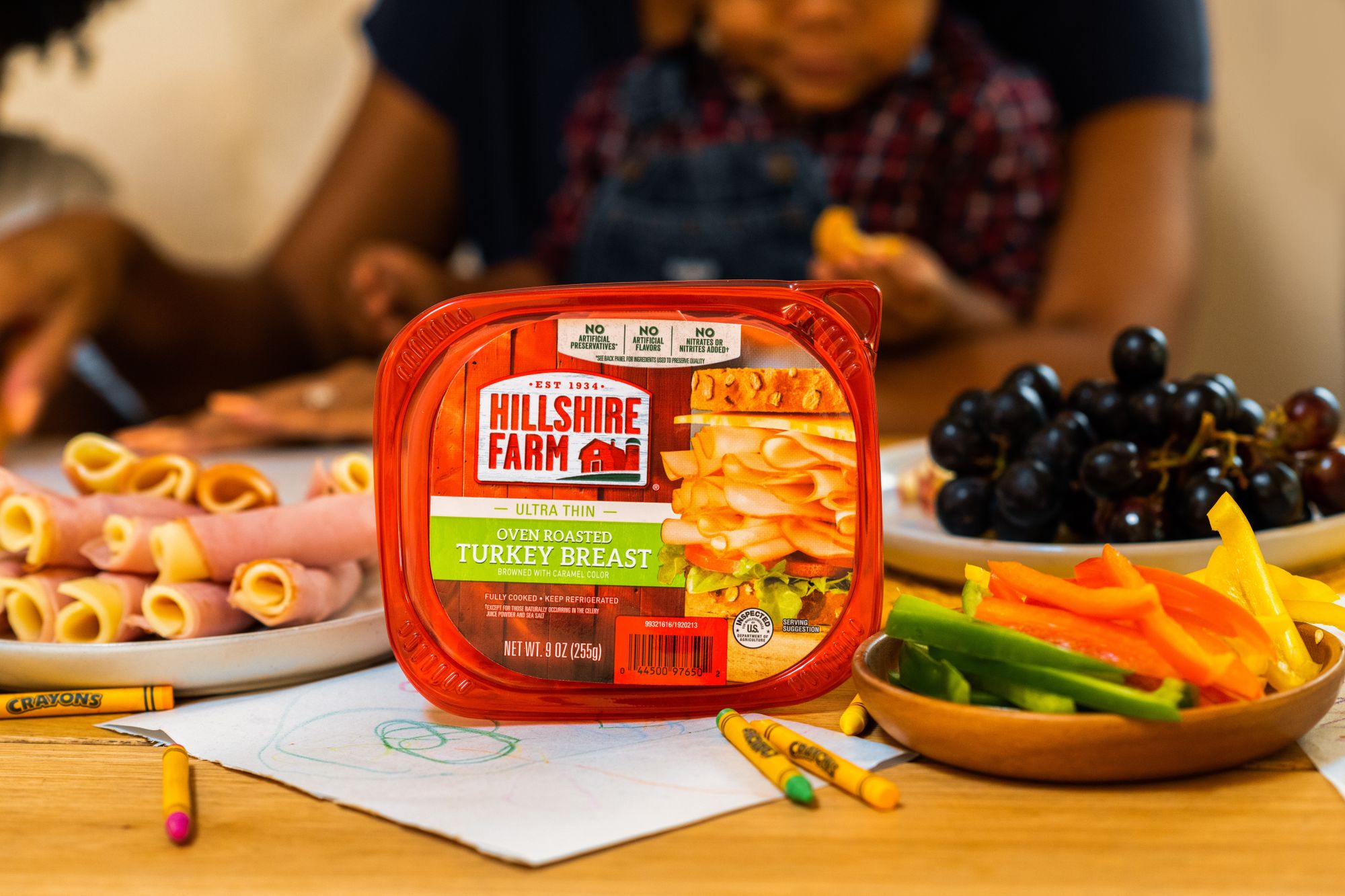The food manufacturing industry is vital to the global economy, providing sustenance and employment to millions of people. However, with its importance comes a set of critical issues and challenges that must be addressed.
From food safety concerns to supply chain management issues, food manufacturers face numerous obstacles that can impact their ability to produce and distribute products effectively.
One of the most pressing concerns for food manufacturers is food safety. The Centers for Disease Control and Prevention (CDC) estimates that 48 million Americans get sick each year, 128,000 are hospitalized, and 3,000 die from foodborne illnesses.
As a result, food manufacturers must take steps to ensure that their products are safe for consumption and comply with regulatory requirements.
Additionally, food manufacturers must also address issues related to supply chain management. As the industry becomes more globalized, supply chains have become longer and more complex, increasing the risk of disruptions caused by natural disasters, geopolitical events, or other factors.
Ensuring that raw materials are sourced responsibly and that products are delivered efficiently is essential for food manufacturers to remain competitive in the marketplace.

In this article, we will explore these critical issues and challenges facing the food manufacturing industry in the United States. We will examine how food manufacturers address these concerns and implement strategies to overcome them.
By understanding these challenges and the potential solutions, food manufacturers can improve their operations and continue to provide high-quality products to consumers.
Here's what we shall cover in this post:
- Introduction to Challenges in Food Manufacturing
- Managing Raw Materials and Supply Chain Risks
- Ensuring Food Traceability and Recall Preparedness
- Addressing Concerns over Food Allergens and Intolerances
- Managing Equipment Maintenance and Downtime
- Adapting to Evolving Consumer Preferences and Trends
- Addressing the Labor Shortage in Food Manufacturing
- Maintaining Cleanliness and Sanitation in Manufacturing Facilities
- How Deskera Can Assist You?
- Conclusion
- Key Takeaways
Introduction to Challenges in Food Manufacturing
Food manufacturing is a significant contributor to the economy in the United States, with the industry employing over 1.7 million workers and generating $985 billion in economic activity annually.
However, as the industry continues to grow, it must also confront a variety of challenges that can impact its ability to operate efficiently and sustainably.
Consumers increasingly demand sustainable food products that are produced with minimal environmental impact. Food manufacturers must reduce their carbon footprint, minimize waste, and implement sustainable sourcing practices to meet consumer demand and comply with regulatory requirements.
Another challenge facing the food manufacturing industry is sustainability. With concerns about climate change and environmental degradation, many consumers are demanding products that are produced using sustainable practices. In response, food manufacturers are exploring ways to reduce waste, conserve energy, and minimize their environmental impact.
Food Safety Regulations and Compliance
Food safety regulations and compliance are crucial for ensuring the safety and quality of food products. However, compliance with these regulations can often pose significant challenges for food manufacturers.
The complexity of Regulations: One of the biggest challenges faced by food manufacturers is the complexity of food safety regulations.
These regulations are often extensive and difficult to interpret, requiring specialized knowledge and expertise. It can be challenging for food manufacturers to navigate these regulations, particularly smaller companies that may need more resources to hire specialized personnel.
Changing Regulations: Another challenge faced by food manufacturers is the constant evolution of food safety regulations. Regulations are frequently updated to reflect new scientific research and emerging risks, which can make it difficult for manufacturers to keep up.
This can be particularly challenging for smaller companies that may need more resources to invest in keeping up-to-date with regulatory changes.
International Standards: Many food manufacturers operate globally, which means they must comply with regulations in multiple jurisdictions. International standards can differ significantly, making it difficult for companies to comply with regulations in different markets.
This can be particularly challenging for smaller companies that may need more resources to navigate multiple regulatory regimes.
Cost of Compliance: Compliance with food safety regulations can be expensive, particularly for smaller food manufacturers. The cost of complying with regulations can include investments in technology, training, and personnel.
These costs can be prohibitive for smaller companies, making it difficult for them to remain competitive in the marketplace.
Resource Constraints: Compliance with food safety regulations requires significant resources, including specialized personnel, technology, and equipment. Smaller companies may need more resources to invest in these areas, making it challenging for them to comply with regulations.
This can create a barrier to entry for new companies, which may need help to compete with established players in the marketplace.
Supply Chain Management: Food safety regulations extend beyond the manufacturing facility to the entire supply chain. This means that manufacturers must ensure that their suppliers and distributors also comply with relevant regulations. Supply chain management can be challenging, particularly for smaller companies that may need more resources to monitor their entire supply chain.
Managing Raw Materials and Supply Chain Risks
The food manufacturing industry is one of the most complex and challenging sectors of the global economy, and it faces a range of challenges that can impact its sustainability and profitability. One of the most critical challenges facing food manufacturers is the need to manage raw materials and supply chain risks.
Types of Raw Materials Used in Food Manufacturing: Raw materials are the foundation of the food manufacturing process. The primary categories of raw materials used in food manufacturing include grains, fruits and vegetables, dairy products, meats, and seafood.
Within each of these categories, there are many different types of raw materials that are used to produce a wide range of food products.
Supply Chain Risks Associated with Raw Materials: There are many different types of supply chain risks associated with raw materials, including price volatility, supply shortages, quality issues, and transportation disruptions. These risks can significantly impact the profitability and sustainability of food manufacturers.
- Price volatility is a common risk associated with raw materials, particularly those that are sourced from international markets. The price of raw materials can be affected by a wide range of factors, including changes in exchange rates, geopolitical events, weather patterns, and global supply and demand.
- Supply shortages are another significant risk for food manufacturers. This can occur when there is a disruption in the supply chain, such as a natural disaster, or when demand for a particular raw material exceeds the available supply.
- Quality issues are another potential risk for food manufacturers. This can include contamination, spoilage, and other issues that can impact the safety and quality of the final product. These risks can be particularly significant when working with perishable raw materials, such as fruits and vegetables, dairy products, and meats.
- Transportation disruptions are another common risk associated with raw materials. This can include delays or disruptions in the transportation network, such as labor strikes, equipment failures, or weather-related issues. These disruptions can impact the timely delivery of raw materials, which can lead to production delays and other operational challenges.
Strategies for Managing Raw Materials and Supply Chain Risks: To effectively manage raw materials and supply chain risks, food manufacturers need to implement a range of strategies, including risk assessment, diversification, and contingency planning.
- Risk assessment involves identifying and analyzing the various risks associated with the raw materials used in the manufacturing process. This includes conducting a comprehensive review of the supply chain, assessing the potential impact of different risks, and developing strategies to mitigate those risks.
- Diversification is another important strategy for managing raw materials and supply chain risks. This involves sourcing raw materials from multiple suppliers and regions, which can help to reduce the impact of any individual supplier or region experiencing a disruption in supply.
- Contingency planning is also critical for managing raw materials and supply chain risks. This involves developing a plan of action in the event of a supply chain disruption or another issue that impacts the availability of raw materials. This can include identifying alternative suppliers, developing backup transportation routes, and increasing inventory levels.
Ensuring Food Traceability and Recall Preparedness
Ensuring food traceability and recall preparedness is crucial for preventing and managing food safety incidents.
What is Food Traceability?
Food traceability refers to the ability to track the movement of food products from the point of origin through all stages of production, processing, and distribution. This includes the ability to identify the source of raw materials used in the production process and the final destination of the finished product.
Traceability allows food manufacturers to identify potential sources of contamination or other safety issues and take action to prevent harm to consumers.
Importance of Food Traceability in Food Manufacturing
Food traceability is critical for ensuring food safety and preventing foodborne illness. By tracking the movement of food products, manufacturers can quickly identify the source of any safety issues and take action to prevent further harm.
Traceability also helps to reduce the risk of food fraud by enabling manufacturers to verify the authenticity of raw materials and finished products.
Challenges in Ensuring Food Traceability in Food Manufacturing
One of the biggest challenges in ensuring food traceability in food manufacturing is managing the complexity of the food supply chain. As food products move through the supply chain, they pass through multiple stages of production and processing, making it difficult to track their movement accurately.
Another challenge is the need for standardized systems and processes for tracking and recording information about food products.
Strategies for Ensuring Food Traceability in Food Manufacturing
To ensure food traceability in food manufacturing, companies must implement robust systems and processes for tracking and recording information about their products. This includes implementing technologies such as barcoding and RFID tagging, which enable companies to track the movement of their products throughout the supply chain.
It also involves creating standardized systems and processes for recording and sharing information about food products, including the origin of raw materials, processing methods, and distribution channels.
What is Recall Preparedness?
Recall preparedness refers to the ability of food manufacturers to quickly and efficiently recall products from the market in the event of a safety issue or contamination incident.
Recall preparedness involves having systems and processes in place to identify potentially contaminated products, notify consumers, and remove the products from the market as quickly as possible.
Importance of Recall Preparedness in Food Manufacturing
Recall preparedness is critical for protecting consumer health and safety and maintaining the reputation of food manufacturers. In the event of a safety issue or contamination incident, swift action is necessary to prevent harm to consumers and prevent the spread of contamination.
Effective recall preparedness can help to minimize the impact of such incidents on consumers and on the reputation of the company.
Challenges in Recall Preparedness in Food Manufacturing
One of the biggest challenges in recall preparedness is the complexity of the food supply chain. As products move through the supply chain, they pass through multiple stages of production and processing, making it difficult to track the movement of products accurately.
Another challenge is effective communication between stakeholders, including manufacturers, distributors, and retailers.
Strategies for Recall Preparedness in Food Manufacturing
To ensure recall preparedness in food manufacturing, companies must implement robust systems and processes for identifying potentially contaminated products and removing them from the market as quickly as possible.
This involves creating clear protocols for notifying consumers and regulators of safety issues and establishing effective communication channels with all stakeholders involved in the supply chain. Companies must also conduct regular testing and monitoring of their products to identify any potential safety issues before they become widespread.
Addressing Concerns over Food Allergens and Intolerances
Food allergies and intolerances are becoming increasingly common, affecting millions of people worldwide. Food manufacturing companies face a significant challenge in addressing these concerns to ensure the safety of their products for all consumers.
Understanding Food Allergens and Intolerances
- Food allergens are substances that trigger an immune response in individuals who are allergic to them.
- On the other hand, food intolerances are non-immune reactions to food, and the symptoms can be less severe than those of food allergies.
- The most common food allergens include milk, eggs, peanuts, tree nuts, wheat, soy, fish, and shellfish.
- A variety of factors, including lactose intolerance, gluten sensitivity, and food additives such as sulfites and MSG, can cause food intolerances.
Labeling Requirements for Allergens
- Food manufacturers are required to list major food allergens on their product labels in accordance with FDA regulations.
- The labels must clearly identify the presence of the allergen in the product, either in the ingredient list or in a separate "Contains" statement.
- Manufacturers must also ensure that the product is free of unintended allergen contamination during production and packaging.
Cross-Contamination Risks
- Cross-contamination occurs when allergens are unintentionally transferred to products that do not contain the allergen.
- Food manufacturers must have measures in place to prevent cross-contamination, such as dedicated production lines for allergen-free products or thorough cleaning procedures between product runs.
- Staff training and education are also critical to preventing cross-contamination.
Ingredient Sourcing and Verification
- Food manufacturers must carefully source their ingredients to ensure that they are free from allergen contamination.
- This requires close communication with suppliers and regular verification of ingredient purity.
- Manufacturers may also use third-party certification programs to ensure the absence of allergens in their ingredients.
Allergen Testing and Validation
- Allergen testing is an important tool for food manufacturers to ensure the absence of allergens in their products.
- Testing can be done at various stages of the production process, from raw materials to finished products.
- Validation is necessary to ensure the accuracy and reliability of the testing methods used.
Communication with Consumers
- Food manufacturers must be transparent in communicating with consumers regarding allergen risks and the steps taken to mitigate them.
- This includes providing clear and accurate labeling, making allergen information readily available, and responding promptly and effectively to consumer inquiries and concerns.
Managing Equipment Maintenance and Downtime
Equipment maintenance and downtime are major challenges in food manufacturing that can affect the quality and safety of the final product. Food manufacturing companies need a maintenance and repair plan to ensure that equipment is functioning correctly and efficiently.
Downtime can also impact production schedules and result in lost revenue.
Challenges in managing equipment maintenance and downtime:
- Lack of preventive maintenance: Food manufacturing companies may not prioritize preventive maintenance due to time constraints and cost concerns. This can lead to unexpected equipment breakdowns and longer downtime periods.
- Aging equipment: As equipment ages, it becomes more prone to breakdowns and requires more frequent maintenance. Food manufacturing companies may need help to replace aging equipment due to the high cost of new equipment.
- Inefficient repair processes: If a repair process is not well-defined and documented, it can result in inefficiencies and longer downtime periods. It is essential to have standard operating procedures in place for equipment repairs.
- Availability of spare parts: Food manufacturing companies may need help to obtain spare parts for their equipment, especially for older machines. This can lead to longer downtime periods while waiting for replacement parts to arrive.
- Training and skill gaps: Properly maintaining equipment requires skilled technicians with specialized training. Food manufacturing companies may need help finding qualified technicians or providing adequate training to existing staff.
Overcoming the challenges:
- Prioritize preventive maintenance: Food manufacturing companies should prioritize preventive maintenance and create a maintenance schedule to ensure that equipment is regularly serviced and inspected.
- Invest in new equipment: Investing in new equipment can reduce downtime and maintenance costs in the long run. Companies can consider financing options or leasing equipment to make the investment more manageable.
- Document repair processes: Clear and documented repair processes can improve efficiency and reduce downtime. Companies should create standard operating procedures for equipment repairs.
- Maintain an inventory of spare parts: Maintaining an inventory of spare parts can help reduce downtime by allowing for quicker repairs. Companies should regularly review their spare parts inventory to ensure they have the necessary parts.
- Provide training and development opportunities: Providing training and development opportunities for staff can improve their skills and knowledge, leading to more efficient equipment maintenance and reduced downtime periods.
Adapting to Evolving Consumer Preferences and Trends
As the food manufacturing industry continues to evolve, one of the biggest challenges faced by manufacturers is adapting to changing consumer preferences and trends.
Shifts in Consumer Preferences
Consumer preferences are constantly changing, and it can be difficult for manufacturers to keep up. For example, there has been a growing demand for healthier, more natural, and organic food products in recent years. Consumers are also more concerned about where their food comes from and are looking for more sustainable and ethical products.
This shift in consumer preferences can be challenging for manufacturers who may need to re-formulate existing products or develop new ones to meet changing demands.
Innovation and Product Development
In order to meet changing consumer demands, manufacturers must be willing to innovate and develop new products. This can be challenging as it requires significant investment in research and development and a willingness to take risks.
However, it is essential for manufacturers who want to remain competitive in the marketplace.
Keeping Up with Technology
Technology is rapidly changing the food manufacturing industry, and manufacturers must be able to keep up in order to remain competitive. Technology is playing an increasingly important role in food manufacturing, from automation and robotics to data analytics and artificial intelligence.
Manufacturers who are unable to adapt to these changes risk falling behind their competitors.
Supply Chain Management
Supply chain management is another area where manufacturers must be able to adapt to changing consumer demands. As consumers become more concerned about sustainability and ethical sourcing, manufacturers must be able to trace their supply chain and ensure that their ingredients are sourced responsibly.
This can be challenging, particularly for manufacturers with complex supply chains.
Marketing and Branding
In order to succeed in the food manufacturing industry, manufacturers must be able to market and brand their products effectively. This requires an understanding of consumer preferences and trends and an ability to create compelling marketing messages that resonate with target audiences.
It can be challenging for manufacturers to develop effective marketing and branding strategies, particularly as the industry becomes more competitive.
Addressing the Labor Shortage in Food Manufacturing
Addressing the labor shortage is crucial to the success of the food manufacturing industry as it impacts production levels, efficiency, and, ultimately, profitability.
- Aging Workforce: One of the primary causes of the labor shortage in food manufacturing is the aging workforce. Many workers are approaching retirement age, and more young workers need to enter the industry to replace them. This puts pressure on food manufacturers to find ways to retain older workers for as long as possible while also finding ways to attract younger workers.
- Lack of Interest in Food Manufacturing: Another challenge is the younger generation's lack of interest in food manufacturing. The industry is perceived as low-paying, repetitive, and unskilled work, which does not appeal to young workers. Additionally, the industry's negative reputation around food safety issues and environmental concerns also hinders the younger workforce's interest in food manufacturing.
- Competition from Other Industries: The food manufacturing industry is also competing with other industries for skilled workers, such as healthcare, technology, and finance. These industries offer more attractive salaries and benefits, making it challenging for food manufacturers to attract and retain top talent.
- Seasonal Labor Demands: Another challenge for the food manufacturing industry is the seasonal nature of the work. During peak production periods, such as harvesting season or holiday rush, worker demand increases. However, during other times of the year, demand for workers decreases, making it challenging to retain workers.
- High Turnover Rates: The food manufacturing industry also has a high turnover rate due to various factors, including low wages, repetitive work, and long working hours. High turnover rates are costly for food manufacturers, leading to increased recruitment and training costs.
Solutions to Address the Labor Shortage in Food Manufacturing:
- Increasing Automation: One solution to address the labor shortage in food manufacturing is to invest in automation technology. Automation technology can reduce reliance on manual labor, improve production efficiency, and reduce labor costs.
- Improving Working Conditions: Food manufacturers can also improve working conditions to attract and retain workers. This includes providing better wages, benefits such as healthcare and retirement plans, and a more positive work environment.
- Increasing Education and Training: Another solution is to increase education and training opportunities to encourage younger generations to consider careers in food manufacturing. This includes offering apprenticeships, internships, and vocational training programs.
- Implementing Flexible Work Schedules: Implementing flexible work schedules can help food manufacturers retain workers by allowing them to balance work and personal commitments. This includes offering part-time or job-sharing options, allowing workers to work from home, and providing flexible working hours.
- Collaborating with Educational Institutions: Food manufacturers can also collaborate with educational institutions to promote careers in food manufacturing. This includes participating in career fairs, offering scholarships or tuition reimbursement programs, and providing guest lectures on the industry.
Managing Energy Consumption and Costs
One of the biggest challenges facing the food manufacturing industry today is managing energy consumption and costs. With rising energy prices and increased pressure to reduce carbon emissions, food manufacturers are being forced to look for innovative ways to reduce their energy usage while maintaining their production levels.
- High energy consumption: One of the primary challenges faced by food manufacturers is the high energy consumption required to run their facilities. From processing to packaging, food manufacturing involves a range of energy-intensive operations that require significant amounts of electricity, natural gas, and other fuels. These high energy costs can significantly impact a manufacturer's bottom line, particularly as energy prices continue to rise.
- Lack of visibility: Food manufacturers' lack of visibility into their energy usage is another challenge. Many manufacturers need more data on their energy consumption, making it difficult to identify areas where energy efficiency improvements can be made. Without this visibility, manufacturers may be missing opportunities to reduce energy consumption and costs.
- Aging equipment: As with many industries, aging equipment is a significant challenge in food manufacturing. Older equipment may be less energy efficient than newer models, resulting in higher energy costs. In addition, older equipment may be more prone to breakdowns and require more maintenance, leading to downtime and lost productivity.
- Production demands: Food manufacturing is a highly competitive industry, and manufacturers are often under pressure to meet high production demands. This can make it difficult to implement energy-saving measures that may require production slowdowns or shutdowns.
- Regulatory requirements: Food manufacturers must comply with a range of regulations and standards, many of which relate to energy consumption and emissions. Compliance with these regulations can be complex and time-consuming, requiring significant resources and expertise.
To address these challenges, food manufacturers can implement a range of energy efficiency measures, including:
- Energy audits: An energy audit can provide manufacturers with a detailed energy usage assessment, identifying areas where energy efficiency improvements can be made. This information can be used to develop a comprehensive energy management plan, which can help to reduce energy consumption and costs.
- Upgrading equipment: Replacing older, less efficient equipment with newer, more energy-efficient models can significantly reduce energy consumption and costs. This can also lead to improved product quality and reduced downtime.
- Process optimization: Optimizing production processes can help to reduce energy consumption and costs. This may involve adjusting production schedules, reducing idle time, or implementing new production technologies.
- Employee training: Educating employees on the importance of energy efficiency can help to create a culture of energy conservation within the organization. This can lead to improved energy management practices and increased energy savings.
- Renewable energy: Many food manufacturers are exploring the use of renewable energy sources, such as solar or wind power, to reduce their reliance on traditional energy sources. While these technologies may require a significant upfront investment, they can provide significant long-term savings.
Maintaining Cleanliness and Sanitation in Manufacturing Facilities
Maintaining cleanliness and sanitation in manufacturing facilities is essential to ensure the safety and quality of food products. There are several challenges that food manufacturers face in achieving this, including:
- Meeting regulatory requirements: Manufacturers must adhere to strict regulations and guidelines regarding food safety and sanitation set by local, state, and federal authorities. They must implement sanitation procedures and document them to comply with regulations.
- Keeping up with best practices: The food manufacturing industry is constantly evolving, and new technologies and practices emerge frequently. Manufacturers must stay up-to-date with the latest industry best practices to ensure they maintain the highest cleanliness and sanitation standards.
- Managing water usage: Water is a critical component of food manufacturing, but it can also be a source of contamination if not managed properly. Manufacturers must implement water management procedures to ensure they use clean water, manage wastewater effectively, and prevent contamination.
- Controlling pests: Pests such as rodents, insects, and birds can carry harmful bacteria and other contaminants into food manufacturing facilities. Manufacturers must implement pest control measures to prevent infestations and manage any issues promptly.
- Managing cleaning chemicals: Cleaning chemicals are necessary to maintain cleanliness and sanitation, but they can also be hazardous if not handled correctly. Manufacturers must implement procedures to ensure the safe handling, storage, and disposal of cleaning chemicals.
To address these challenges, manufacturers can implement several best practices:
- Develop and implement a comprehensive sanitation plan: Manufacturers should have a written sanitation plan outlining procedures for cleaning and sanitizing equipment and facilities and protocols for managing wastewater and controlling pests.
- Train employees on proper sanitation procedures: All employees involved in food manufacturing should receive training on proper sanitation procedures, including cleaning and sanitizing techniques, personal hygiene, and proper handling of cleaning chemicals.
- Conduct regular inspections: Regular inspections can help manufacturers identify areas that may need additional attention or improvement. Inspections should cover equipment, facilities, storage areas, and other critical areas.
- Implement an integrated pest management program: An integrated pest management program involves monitoring and preventing pest infestations through a combination of preventive measures, such as sealing cracks and gaps, removing food sources, and targeted use.
- Use equipment designed for easy cleaning: Manufacturers should select equipment that is designed to be easily cleaned and sanitized, with minimal crevices or hard-to-reach areas where contaminants can accumulate.
Ensuring Adequate Training and Education for Food Workers
One of the significant challenges faced by the food manufacturing industry is the need for adequate training and education for food workers.
Importance of Training and Education in Food Manufacturing
- Proper training and education are crucial for ensuring that food workers understand the complex processes involved in food manufacturing.
- Workers need to thoroughly understand food safety, quality control, and regulatory compliance to ensure that the food produced is safe and meets industry standards.
- Training and education are essential for developing new skills and improving existing ones, which can help workers stay competitive and adapt to changes in the industry.
- Proper training can also help reduce the risk of accidents and injuries in the workplace, ensuring a safe and healthy work environment.
- Finally, training and education can also help boost worker morale and job satisfaction, leading to higher productivity and better outcomes.
Challenges of Training and Education in Food Manufacturing
- One of the biggest challenges in providing adequate training and education in food manufacturing is the need for more skilled trainers and educators.
- Many companies need help finding experienced trainers who can effectively teach complex concepts and skills to workers with varying levels of education and experience.
- Another challenge is the cost and time involved in providing training and education to workers. Many companies may need more resources to invest in comprehensive training programs, especially in times of economic uncertainty.
- Additionally, language barriers can be a significant obstacle for workers who speak different languages, making it challenging to provide effective training that everyone can understand.
- Finally, the fast-paced nature of the food manufacturing industry can make it challenging for workers to attend training sessions or participate in education programs.
Addressing the Challenges of Training and Education in Food Manufacturing
- To address the need for more skilled trainers and educators, companies can invest in developing their own internal training programs and hiring experienced trainers who can effectively teach workers.
- To overcome the cost and time constraints of training, companies can utilize online training resources, which can be accessed at any time and from anywhere.
- Language barriers can be overcome by providing training in multiple languages or using translation services to ensure that all workers can understand the training materials.
- To address the fast-paced nature of the industry, companies can consider implementing short, focused training sessions that can be completed during downtime or breaks rather than requiring workers to attend lengthy training sessions that take them away from their work.
The Benefits of Adequate Training and Education in Food Manufacturing
- Providing adequate training and education can help ensure that food workers are equipped with the knowledge and skills needed to produce safe, high-quality food products.
- It can also help reduce the risk of accidents and injuries in the workplace, creating a safer and healthier work environment.
- Adequate training and education can lead to improved worker morale and job satisfaction, which can result in higher productivity and better outcomes.
- Additionally, providing ongoing training and education opportunities can help workers stay up-to-date with the latest industry trends and technologies, allowing them to stay competitive and adaptable in an ever-changing industry.
How Deskera Can Assist You?
Deskera MRP allows you to closely monitor the manufacturing process. From the bill of materials to the production planning features, the solution helps you stay on top of your game and keep your company's competitive edge.

Deskera ERP and MRP system can help you:
- Manage production plans
- Maintain Bill of Materials
- Generate detailed reports
- Create a custom dashboard
Deskera ERP is a comprehensive system that allows you to maintain inventory, manage suppliers, and track supply chain activity in real-time, as well as streamline a variety of other corporate operations.
Deskera Books enables you to manage your accounts and finances more effectively. Maintain sound accounting practices by automating accounting operations such as billing, invoicing, and payment processing.
Deskera CRM is a strong solution that manages your sales and assists you in closing agreements quickly. It not only allows you to do critical duties such as lead generation via email, but it also provides you with a comprehensive view of your sales funnel.
Deskera People is a simple tool for taking control of your human resource management functions. The technology not only speeds up payroll processing but also allows you to manage all other activities such as overtime, benefits, bonuses, training programs, and much more. This is your chance to grow your business, increase earnings, and improve the efficiency of the entire production process.
Conclusion
The food manufacturing industry faces various critical issues and challenges that require addressing to ensure the production of safe, healthy, and sustainable food products.
These challenges include maintaining food safety and quality standards, complying with regulations, adopting sustainable practices, addressing food waste and security, managing supply chains, and embracing emerging technologies.
While these issues may seem daunting, the industry can overcome them through collaboration, innovation, and a shared commitment to creating a more sustainable and resilient food system.
By prioritizing food safety, sustainability, and social responsibility, food manufacturers can enhance their brand reputation and profitability and contribute to the health and well-being of consumers and the planet.
Addressing the critical issues and challenges facing the food manufacturing industry requires a comprehensive and holistic approach involving all stakeholders, including manufacturers, regulators, consumers, and civil society. Only through concerted efforts can we build a food system that is equitable, resilient, and sustainable for generations to come.
Key Takeaways
- Food manufacturing faces numerous critical issues and challenges, such as food safety, sustainability, efficiency, and cost reduction.
- Ensuring food safety is of utmost importance in food manufacturing to avoid foodborne illnesses and improve public health.
- The use of technology such as automation and data analytics can help improve efficiency in food manufacturing and reduce costs.
- Food manufacturing also needs to address sustainability concerns such as reducing waste, greenhouse gas emissions, and water consumption.
- Supply chain management is another critical issue in food manufacturing, where ensuring the traceability and quality of ingredients is crucial.
- The COVID-19 pandemic has brought to light the importance of resilience in food manufacturing, including supply chain disruptions and food safety concerns.
- Regulatory compliance is essential in food manufacturing to ensure adherence to food safety regulations and prevent legal liabilities.
- Consumer preferences and demands are constantly changing, and food manufacturers need to adapt to these trends to remain competitive.
- Using novel ingredients and new food production techniques, such as plant-based and cultured meat, can provide opportunities and challenges for food manufacturers.
- Food manufacturing also faces challenges related to product labelings, packaging, and marketing, such as ensuring transparency and accurate information for consumers.
Related Articles













